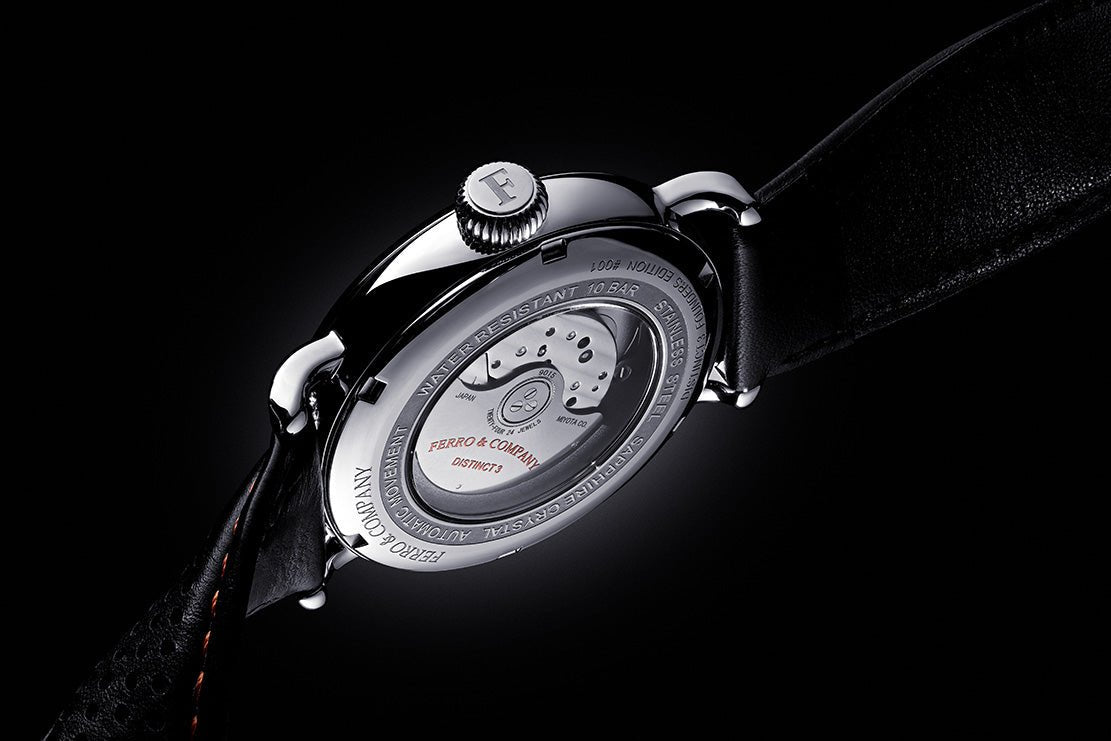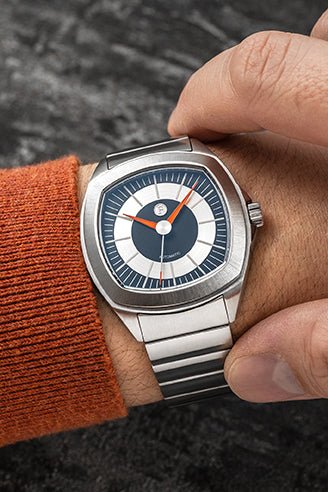Time is something most valuable on this planet. Even a billionaire can’t buy it. But a timepiece can define someone’s status & lifestyle. It has a huge influence on the wearer's personality. If you wear it casually or occasionally, you may be interested in this topic. So, here we’ll discuss how accurate automatic watches are. Also about its complex structure.
What is an Automatic Watch?
An automatic watch is a wonder of horological engineering history. At its core, it is a form of mechanical watch. Yet, with a defining characteristic such as the natural motion of the wearer's wrist or self-wind capabilities. That’s one of the reasons it was named Automatic due to it negating the need for manual winding.
How Accurate are Automatic Watches? | Figure in Numbers
In a typical mechanical automatic watch, the day-to-day timekeeping variation can range up to +/- 10 seconds. Since most mechanical watches achieve a closer accuracy level, they secure time within +/- 5 seconds per day. There are even higher precision mechanical watches that offer a limit deviation to within +/- 3 seconds daily.
Watches featuring mechanical movements and certified as chronometers maintain an accuracy of -4/+6 seconds per day. It's important to note that the accuracy figures for automatic watches represent an average. Yes, it’s calculated over several days.
Are you thinking if they don’t have batteries then how it works?
How Automatic Watches Work?
Simply a watch is just a timepiece weighing some grams.
Right?
Those who think there’s one chip or board that allows them to create the time. It’s not as simple as that.
An automatic watch contains several components connected closely. If you observe them closely it seems like a factory processing raw material into products. Here are some of the parts that are usually found in an automatic watch:
MAINSPRING
First of all, the mainspring is the powerhouse for the automatic watch movement. The rightness of the mainspring is directly proportional to its ability to store extra elastic potential energy.
Sounds a bit technical?
Move on to the next one!
CROWN
In simple terms, a crown is the time setter button. The user rotates it in a clockwise direction to wind the watch. Or to set the time, the user has to rotate it in a pull-out condition.
ROTOR
It can be seen easily on the back of most transparent automatic watches. The rotor is a metal half-round coin that rotates independently and moves the mainspring. That’s the thing that makes it different from a manual wound movement. This means when the watch is on the wrist, even the minor movements of the wear allow it to generate a power backup.
GEAR TRAIN
The gear train contains a series of interconnected gears that transmit power from the watch's mainspring to its hands. In other words, it unwinds the stored energy to give the current to the rest of the watch movement to function properly.
Meanwhile, this complex structure also consists of several small gears, each with a specific role:
- Center Wheel: Driven by the mainspring, it turns once per hour.
- Third Wheel: Interacts with the center wheel to reduce the speed of rotation further.
- Fourth Wheel: Rotates once per minute and often carries the second hand.
- Escape Wheel: The last wheel in the train interacts with the escapement.
BALANCE WHEEL & ESCAPEMENT
These two parts and specific functions accordingly. First, the Balance wheel function is to oscillate (swings back and forth) at a constant rate. As it allows the watch to keep accurate time.
Then it has a regulator, which is attached to the balance wheel, the balance spring, or the hairspring. This spring's tension is meant to be adjusted to speed up or slow down. Also to avoid inaccuracies in timekeeping. So, the effects of temperature changes and physical shocks don’t disrupt anything.
Secondly, the escapement transfers energy to the balance wheel. Every time the balance wheel swings, it interacts with the escapement. This escapement regulates the release of energy from the mainspring.
At last, these interactions produce the "tick-tock" sound of a mechanical watch. Each "tick" and "tock" represents the escapement controlling.
Got it?
Jewels
Not all watches have jewels embedded in them. But the luxury ones must have. The jewels add more value to a watch's cost. It can include rubies, diamonds, or even gold plating. Some of the most expensive watches also have the Moon’s piece in them.
5 Cause of Variations in Time
I hope after undertaking how it works you’re well equipped with this knowledge. Since all the components march like an army then causes the delays? A good question. Below are some of the factors which affect the watch's ability to produce time:
- Temperature Variations: Time & Temperature effect? Yes, extreme temperatures can affect the lubricants inside the watch movement. Thus it causes the metal components to expand or contract. The top-quality watches use materials like titanium and ceramic designed to minimize this impact.
- Positional Changes: This is not the issue with a normal quartz watch, But with the Automatic watches the worn position can influence its timekeeping. Gravity affects the movement's internal mechanisms differently when in different positions (e.g., lying flat, crown up, crown down). That’s why watchmakers adjust movements to perform well in various positions.
- Magnetic Fields: If a wear in an area with a strong magnetic field. It can magnetize the metal components in the watch's movement. Mostly it affects the balance spring and leads to timing irregularities.
- Wear and Tear: After usage for some years, the internal components of a watch may wear down. Therefore the watch companies recommend servicing a watch after 3 to 7 years depending upon usage.
- Mechanical Shock: Sudden impacts or vibrations can affect the delicate internal components. It potentially throws off the timing. This is the main highlighted feature of a watch advertisement.
FAQs
What level of accuracy can I expect from an automatic watch?
Automatic watches typically offer a daily deviation range. Standard models may vary by +/- 10 seconds per day. On the other hand, higher-end watches often maintain accuracy within +/- 5 seconds.
How does an automatic watch maintain its accuracy?
An automatic watch maintains accuracy through its mechanical movement. It includes a balance wheel and escapement mechanism.
Does the position in which I store my automatic watch affect its accuracy?
Yes, the position can impact accuracy. Storing an automatic watch in different positions (dial up, dial down, crown up, etc.) can lead to slight variations in its timekeeping.
Can regular servicing improve the accuracy of my automatic watch?
Yes, servicing allows the watch to function properly. It includes cleaning, lubricating, and adjusting minor movements. Manufacturers often recommend servicing every 3-5 years if you wear it on a regular basis.
Why does my new automatic watch not seem as accurate as expected?
A new automatic watch may require a break-in period to reach optimal accuracy. So, individual habits like how often the watch is worn or the wearer’s activity level can impact. If the issue stays for long then sending your watch to a professional watchkeeper is a must.




